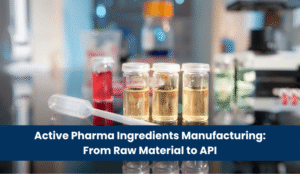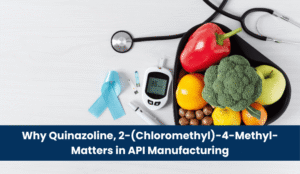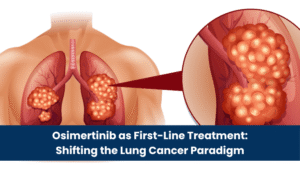The pharmaceutical industry is facing a critical decision. With an increasing number of people in India requiring essential medications, protecting the environment is now more crucial than ever. Applying green chemistry to API manufacturing introduces a new era for active pharmaceutical ingredient manufacturing. What will this mean for India, a country known for its advances in pharma? We will explore why sustainable practices matter and help us build a better future.
What is Green Chemistry? A Sustainable Approach to API Manufacturing
Green chemistry isn’t just jargon—it’s a mindset. It’s about designing chemical processes that slash hazardous substances, waste, and energy use. For active pharmaceutical ingredient companies, this means overhauling every stage of API synthesis, from sourcing api raw materials to optimising production workflows.
Think of it this way: instead of relying on toxic solvents, why not use biodegradable alternatives? Instead of energy-guzzling reactions, why not design processes that work at room temperature? Green chemistry answers these questions by blending innovation with responsibility. The result? APIs that are as kind to the planet as they are effective for patients.
But here’s the kicker: this approach isn’t just about compliance. It’s about leadership. Indian pharmaceutical ingredients manufacturers, like Bulat Pharmaceutical, are proving that sustainability and scientific excellence can—and should—go hand in hand.
Why Green Chemistry Matters in Pharmaceutical Manufacturing?
Let’s get real for a moment. Traditional API manufacturing leaves a mark. Energy-intensive processes, chemical waste, and resource depletion are just the tip of the iceberg. The stakes are sky-high with India’s pharmaceutical sector poised to hit $130 billion by 2030.
Green chemistry in API manufacturing tackles two pressing issues:
- Planet Over Profit: Cutting pollutants that poison air, water, and soil.
- Resource Wisdom: Minimising water, energy, and api raw material waste.
But why should this matter to you? Because every pill, capsule, or injection starts with a chemical process. If that process harms ecosystems, are we truly healing? For eco-friendly API manufacturing to thrive, manufacturers, policymakers, and consumers must unite. After all, isn’t a greener India the ultimate goal?
Key Principles of Green Chemistry in API Synthesis
Green chemistry revolves around 12 principles, but let’s spotlight those transforming API manufacturer workflows today:
- Waste Prevention: Design processes that generate little to no by-products.
- Safer Solvents: Swap toxic chemicals for water-based or ionic liquid alternatives.
- Energy Efficiency: Use catalysts or enzymes to run reactions under mild conditions.
- Renewable Resources: Source api raw materials from sustainable feedstocks.
For example, active pharmaceutical ingredient manufacturers can opt for plant-based options instead of petroleum-derived solvents. This isn’t just eco-friendly—it’s cost-effective long-term. Bulat Pharmaceutical, for instance, leverages advanced solvent recovery systems to reuse up to 90% of solvents, aligning with global green chemistry benchmarks.
Sustainable Practices in API Manufacturing: Reducing Waste and Energy Use
How do top-tier pharmaceutical ingredients manufacturers walk the sustainability talk? Let’s break it down:
| Practice | Impact |
| Continuous Flow Processes | Reduces energy use by 30-50% vs. batch methods. |
| Catalyst Recycling | Cuts metal waste by reusing catalysts multiple times. |
| Waste Valorization | Converts by-products into usable materials. |
These strategies aren’t theoretical—they’re actionable. Take solvent recovery, a practice championed by Bulat Pharmaceutical. By reclaiming solvents, manufacturers shrink waste and costs simultaneously. It’s an example of how API manufacturing sustainability drives ecological and economic wins.
Eco-Friendly Solvents and Catalysts in Green API Production
Traditional solvents like toluene or hexane get the job done, but at a cost. They’re volatile, toxic, and persist in ecosystems. Green chemistry in API manufacturing flips the script with alternatives like:
- Supercritical CO₂: A non-toxic solvent used in extraction processes.
- Bio-Based Solvents: Derived from crops like corn or sugarcane.
- Enzyme Catalysts: Operate efficiently under mild conditions.
These swaps aren’t just “nice-to-have.” For active pharmaceutical ingredient companies, they’re a strategic edge. Safer solvents mean safer workplaces. Biocatalysts mean lower energy bills. And for India’s eco-conscious market, they’re a badge of trust.
Challenges and Future Prospects of Green API Manufacturing
Transitioning to green practices isn’t all sunshine. High R&D costs, scaling hurdles, and outdated infrastructure can slow progress. Yet, the tide is turning. India’s regulatory push for cleaner production—think revised Schedule M guidelines—is accelerating change. Meanwhile, global demand for sustainable pharma is skyrocketing.
So, what’s next? The future of eco-friendly API manufacturing could include:
- AI-Driven Process Optimisation: Predicting efficient reaction pathways.
- Circular Economy Models: Recycling api raw materials from expired drugs.
- Bio-Based APIs: Using microbial fermentation to produce ingredients.
Bulat Pharmaceutical is already ahead of the curve, investing in technologies that align with these trends. Their commitment underscores a vital truth: sustainability isn’t a cost—it’s an investment in relevance.
How Green Chemistry is Shaping the Future of Pharmaceuticals
The shift toward API manufacturing sustainability isn’t optional—it’s existential. Patients want effective medicines, but also ask, “How are these made?” Green chemistry bridges this gap, ensuring that medical progress doesn’t come at Earth’s expense.
This is a golden opportunity for India. By taking charge of green chemistry in API manufacturing, the country can cement its role as a global pharmaceutical powerhouse. Companies like Bulat Pharmaceutical are showing the way, blending cutting-edge science with unwavering environmental stewardship.
Building a Greener Tomorrow: Bulat Pharmaceutical’s Vision for Sustainable Pharma
Green chemistry in API manufacturing isn’t a distant ideal—it’s here. From solvent recovery to renewable feedstocks, Indian active pharmaceutical ingredient companies are rewriting the rulebook. But the journey has just begun.
What’s needed now? Collaboration, innovation, and a shared vision. When manufacturers, policymakers, and consumers unite, sustainability stops being a buzzword and becomes a blueprint. With pioneers like Bulat Pharmaceutical leading by example, India’s pharmaceutical future looks brighter—and greener—than ever.






